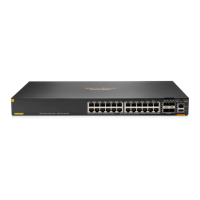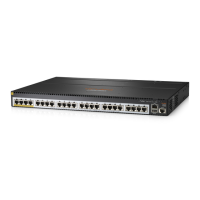54
Configuring RBAC
Overview
Role-based access control (RBAC) controls user access to items and system resources based on
user roles. In this chapter, items include commands, XML elements, and MIB nodes, and system
resources include interfaces and VLANs.
RBAC assigns access permissions to user roles that are created for different job functions. Users are
given permission to access a set of items and resources based on the users' user roles. Because
user roles are static in contrast to users, separating permissions from users enables simple
permission authorization management. You only need to change the user role permissions, remove
user roles, or assign new user roles in case of user changes. For example, you can change the user
role permissions or assign new user roles to change the job responsibilities of a user.
Permission assignment
Use the following methods to assign permissions to a user role:
• Define a set of rules to determine accessible or inaccessible items for the user role. (See "User
role rules.")
• Config
ure resource access policies to specify which interfaces and VLANs are accessible to the
user role. (See "Resource access policies.")
T
o use a command related to a resource (an interface or VLAN), a user role must have access to
both the command and the resource.
For example, a user role has access to the qos apply policy command and access only to interface
GigabitEthernet 1/0/1. With this user role, you can enter interface view and use the qos apply policy
command on the interface. However, you cannot enter the view of any other interface or use the
command on any other interface. If the user role has access to any interface but does not have
access to the qos apply policy command, you cannot use the command on any interface.
User role rules
User role rules permit or deny access to commands, XML elements, or MIB nodes. You can define
the following types of rules for different access control granularities:
• Command rule—Controls access to a command or a set of commands that match a regular
expression.
• Feature rule—Controls access to the commands of a feature by command type.
• Feature group rule—Controls access to commands of features in a feature group by
command type.
• XML element rule—Controls access to XML elements used for configuring the device.
• OID rule—Controls SNMP access to a MIB node and its child nodes. The path from the root
node to that node is uniquely identified by OID.
The commands, XML elements, and MIB nodes are controlled based on the following types:
• Read—Commands, XML elements, or MIB nodes that display configuration and maintenance
information. For example, the display commands and the dir command.
• Write—Commands, XML elements, or MIB nodes that configure the features in the system. For
example, the info-center enable command and the debugging command.
• Execute—Commands, XML elements, or MIB nodes that execute specific functions. For
example, the ping command and the ftp command.

